|
|
|
Книги Davis Paul

|
Dictation contains a wealth of new techniques to extend the traditional language-learning activity of dictation. The authors present some thought-provoking answers to such apparently simple questions as: Who chooses the text? Who dictates? Who corrects? What and how do they correct? The activities range from traditional focuses on spelling and punctuation problems to exercise that emphasize personal attitudes and opinions of both teachers and students. Dictation provides: activities suitable for a wide range of levels and ages; example texts for many activities, with permission to copy; opportunities for students to create their own texts; a variety of suggested correction techniques; suggestions for using dictation in teacher training. |

|
The Company Words Keep is a practical and thought-provoking guide for language teachers, showing how the latest insights into language chunks can lead to learners acquiring natural and fluent English. Here is a new methodology based on the Lexical Approach, a practical theory of language, of learning — and of teaching. The authors have drawn on their considerable experiences to reflect both on the situation of many non-native teachers around the world who are not always sure which word partnerships are likely and unlikely as well addressing native speakers who still need point-of-need confidence in class and in the key terms involved in the teaching of lexical chunks. They provide: an approach to all aspects of teaching chunks: from beginners to advanced, from ESP to exam preparation; a glossary of essential terms: from acronyms to the Web, deixis to delexification, priming to pragmatics; and a new methodology: a practical theory of language, of learning — and of teaching. The Company Words Keep contains three distinctive parts which focus in turn on theory, practice and development: Part A: answers three key questions: What is a chunk? How fixed is a chunk? How long is a chunk? The authors draw from three factors: the use of corpus data; an increased interest by linguists in word partnerships; and the availability of computational tools that can sort the data. Part B: offers a battery of over a hundred activities that will get your students chunking. They introduce and practise chunks, exploiting both the coursebook and authentic texts, as well as making the most of the immense possibilities afforded by the use of data processing. Part C: gives further insights, helping you to review what you know, reflect on the reality of lexical chunking and take steps to find out more for yourselves — in the interest of your personal and professional life. |
|